(first posted 8/30/2014) In the twenties and thirties, Cadillac was a true world-class luxury car, with cylinder counts as lofty as its prices. But the Depression and rising income taxes changed everything. So for 1941, a whole new Cadillac with a whole new mission and marketing strategy appeared: lower prices, to compete with Packard and the other mid-price brands.
As such, this is truly the first modern Cadillac, as it established a price relationship with its little brother Chevrolet of roughly 2:1, one that it would maintain for many decades. So it’s not hard to see why someone would be drawn to updating their ’41 Cadillac to keep up with the times, comfort, and faster highway speeds. The subject of modifying classic cars with updated components can be a touchy one. To butcher up a true and rare classic, often by setting the body on a modern frame and drive train, is derided by some, including a number of us here. But this Cadillac is still significantly original, and it’s not exactly a rare V16 from the mid-thirties.
Yes, originality is a virtue, but then we don’t want to be saints all the time, do we? Aren’t there moments when we imagined blowing off some kid in his Honda in a 1941 Cadillac with a throbbing warmed-up 500 cubic inch V8 under the hood? I have. But this car’s owner acted on that imagination, and quite effectively at that.
Before we get into the good stuff, here’s the bad: my new camera, which flubbed several of the most important shots. I’ve ruined several Lumix SZ7 cameras because I carry them in my pockets, which are inevitably dirty and dusty from my other work and gardening. Their zoom lenses create a partial vacuum as the lens extends, sucking in dust and debris. One of them has massive blotches on the sensor, the other a jammed lens.
It’s not made anymore, so I bought a Lumix SZ8, thinking it would be a similar replacement. It’s not; it’s been cheapened down substantially and I hate it, as its on-off switch is now a tiny button, it’s slow to fire up, and it its focus is so slow or crappy, the result being this. Also the contrast is too intense, and there are other issues. It must go ASAP.
So this shot, which shows off not only the Caddy’s handsome lines and graceful butt as well as the substantially widened rear wheels and big dual exhaust tips is bad, as well as a few other key shots. But I suspect some of you would rather I keep going and show you what this owner has done to turn what was originally a 100mph-capable car into a 150 mph-capable autobahn flyer.
Since the engine has obviously become the focus here, let’s get to it first. The Cadillac’s long and tapered hood is released by firmly fondling the beautiful woman on the top and lifting her upwards so that she’s pointing skywards.
Here’s what sat under it, before being ejected in favor of a more modern Cadillac engine. This 346 cubic inch flathead V8 was known for its smooth-running characteristics and durability. Note how the exhaust ports are on top, along with the intakes. That makes for a bit messier plumbing, but avoids the unfortunate hot spots in the cylinder block that Ford flathead V8s had, due to Henry Ford insisting that the exhaust ports snake their way between the cylinders to the bottom.
The revolutionary four-speed Hydramatic automatic was also available on Cadillacs in 1941, the first in its field, and another feather in Cadillac’s growing war bonnet with which to take on Packard for supremacy in its field.
According my Encyclopedia of American Cars, the improved output of the 1941 150 hp engine and revised rear axle ratios made the ’41 Caddys capable of a genuine 100 mph top speed, with 0-60 time in about 14 seconds. That’s as good or better than many of the Cadillacs of the 1980s, sad to say.
But not good enough for this owner. So now there’s a 500 CID (8.2 liter) Cadillac V8 at work, warmed over with a mild cam, a big Holley double-pumper four barrel carburetor, and exhaust headers. Actual horsepower is unknown, but since this engine was originally rated at 365 (gross) hp in its hi-compression 1970 tune, I’d venture to guess that some 450 gross/375 net hp or more are on tap. Torque? Sufficient, as Rolls-Royce would have said. Or more than so.
Whatever planet-turning amounts it can churn out are amplified further by the THM 400 behind it, and a rear axle sourced from a Camaro. The interior has been kept largely intact, except for the steering wheel and column. Needless to say, the brakes have been upgraded to beefy discs, and there are air-ride shocks to control both ride height and improve the ride. I noticed the rear suspension being stock (leaf springs), and power steering now works through the front wheels as well as the upgraded brakes and shocks.
The rear is also largely original, except for the actual upholstery material and a few other touches. I appreciate what this owner has done over time to bring back what was a rough car into one he and his large extended family can enjoy for trips and outings, with all the comforts, performance and convenience of a more modern car.
I was speculating on that 150 mph capability, but the owner did say that at 80, it’s just loafing along, and that the ride is rock solid, quiet and smooth, thanks to the Cadillac’s sturdy frame and well built body. But I’m pretty sure it could show its tail to a healthy percentage of the cars out there on the street, should it feel the urge to do so. I would.
The paint is metallic, and the deep purple of the upper body has quite the glint in the sunshine.
Cadillacs were all new for 1941, and it was a significant change at that. In order to compete with Packard’s low-price Clipper 110 and 120, Cadillac took its first big step down into the mid-price field with its Series 61, with prices starting at $1345, or $21k inflation adjusted. Sounds more like economy price range? Beware: inflation calculations going back very far lose their relevance, since purchasing power was so much less.
But to put that in perspective, a ’41 Chevy coupe cost $741, so that Cadillac was now less than twice the price of the Chevy. This was a huge change from just ten years earlier, when the cheapest ’32 Cadillac roadster was seven times what a ’32 Chevy roadster cost. And the 1942 Chevy (above) also looked mighty similar to the Cadillac.
1941 marked a key turning point, and established a much more compressed “Sloanian Ladder” than the one its namesake had structured in the 1920s. But the times were changing, and Packard’s big step into the mid-price segment and abandonment of the true luxury field was on. That may have hurt it in some respects, but it was the blueprint for the American industry from then on.
The classic era of the twenties and early thirties was over for good, and the high incremental income taxes (up to 91%) of the post war era until 1963 demanded a more compressed range of prices. Cadillac’s strategy for 1941 resulted in a healthy bump in sales, up to 66,130, and put it in striking position to overtake Packard; that final assault would have to wait until after the war. But the elements of Cadillac’s inexorable rise to the top was now in place, with these 1941 models. And that fundamental strategy would stay in place until….the Cimarron.
I like to end my CCs with a profile shot. And this car had a splendid one to show off, to a properly-functioning camera. Not mine, that day. Sigh.
The design of the 1941 sedans was heavily influenced by the 1938 Sixty Special, one of the most groundbreaking and influential designs ever. It was a young Bill Mitchell’s first shot, and what a slam dunk it was. No wonder he instantly became Harley Earl’s favorite, and future successor. The Sixty Special distinctive proportions, a fortuitous blend of ultra-new and traditional elements, clean lines and a formal roof line, all of which became Mitchell’s trademark, would influence Cadillacs and other GM cars for…almost forever. 1975 Seville? 1971 Fleetwood? I could go on.
Now that’s a Cadillac I truly desire, but it would be a bit too rare for a 500 inch transplant up front. Or would it? Depends on how flippant I’m feeling.
So instead of that botched profile, we’ll leave this Cadillac here, to better to hear the sonorous but muted rumble of its mighty engine. That’s what makes this particular Caddy special, even more so than its profile. Good thing it wasn’t stock after all.


















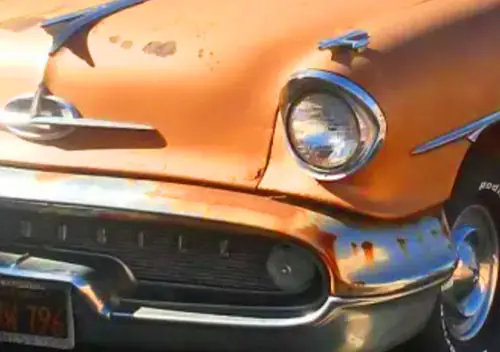
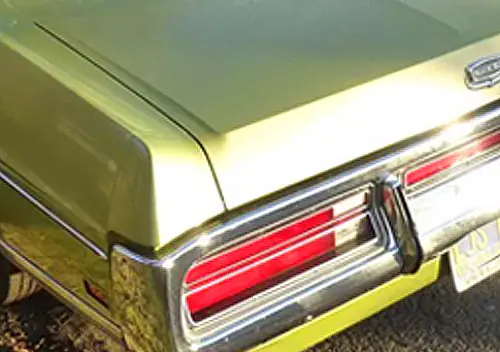
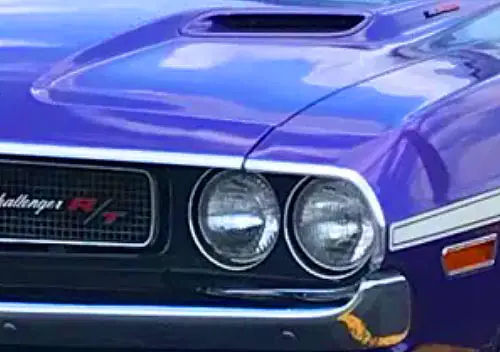

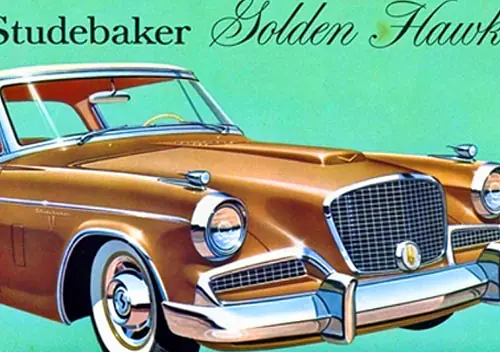
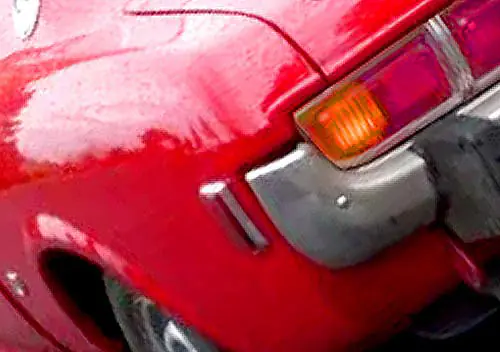
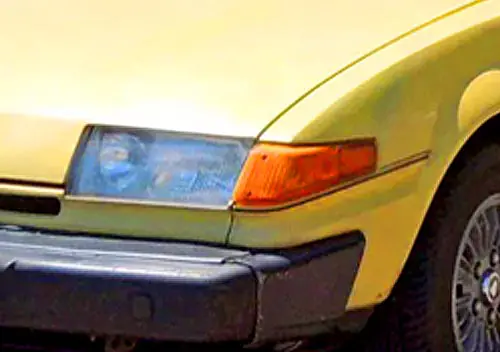
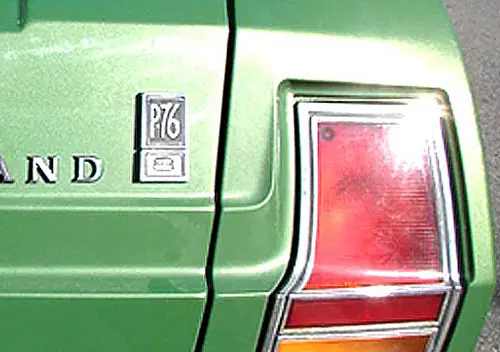
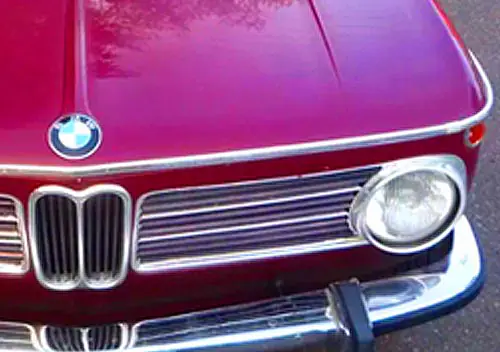
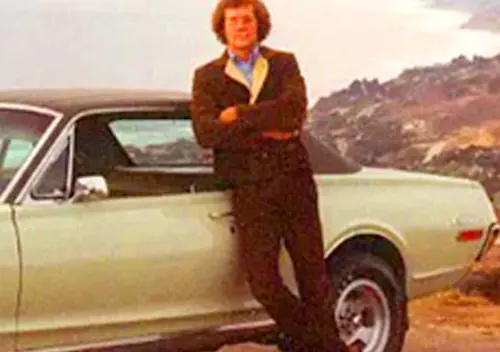
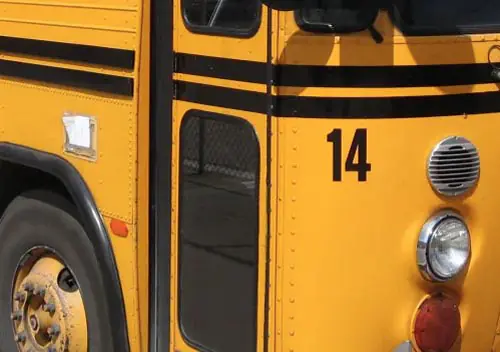
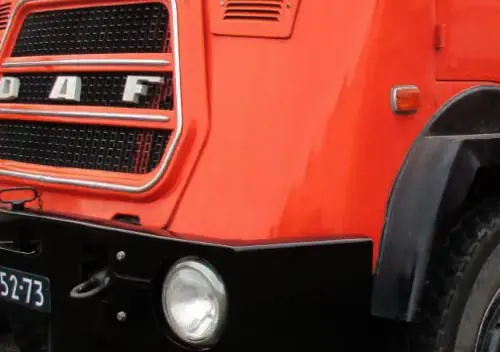
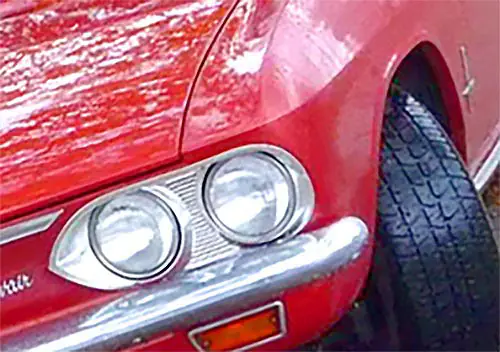
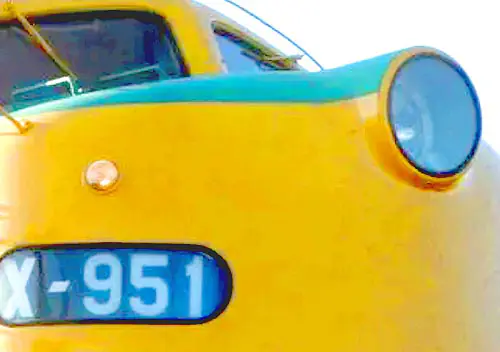
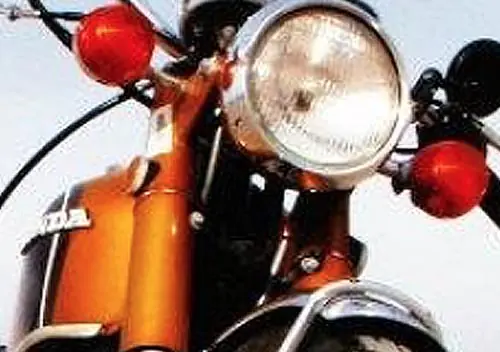
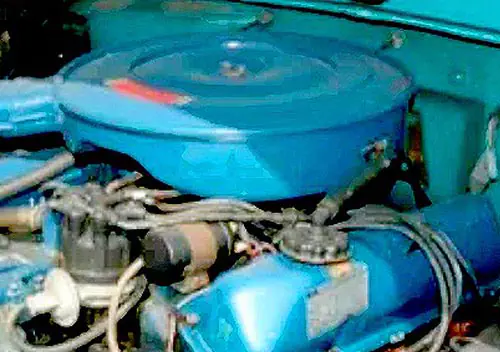
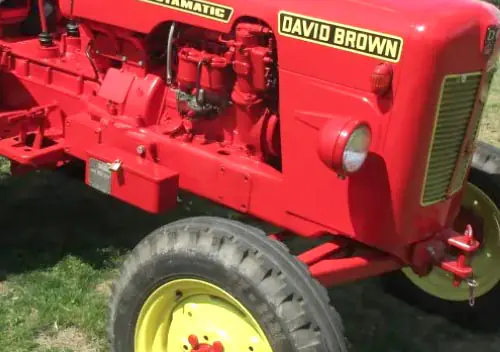
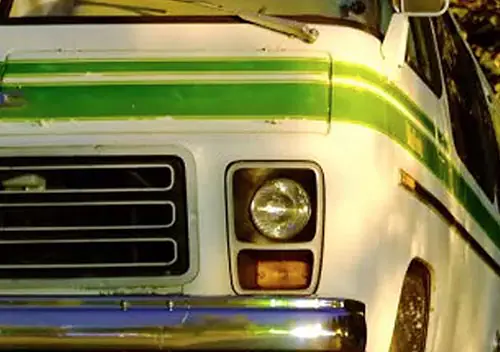

Cadillacs this model everywhere I’m watching the Godfather on TV Sonny gettin blown away in that Lincoln Caddies Packards Lancias, and this turns up CCeffect 5×5. Yeah cool car I like it and the mods to make it capable in modern traffic ast least it didnt get a 350/350 package that would have ruined it.
Absolutely fantastic. The forties to the early fifties was a peak styling period for US cars (especially those fastbacks) and I wish there were more of these beauties on the road for CC to feature. Even with the slight blur I can sit and gaze at that profile for a looooong time.
Unless a car had significant provenance, I’d have no compunction replacing the motorvation as this owner has done.
Bryce: Leave the gun, take the cannoli.
Just wow.
And here’s that style, as produced in Australia!
An absolutely beautiful car – completely ruined by the stuffing of a modern drive train underneath it. Why? You already got a sufficient V-8 for modern traffic, automatic transmission. So instead of having a beautiful, proper, near-classic automobile; all you end up with is another damned resto-rod.
Sorry for being such a grump this morning. I’ve got more respect for a 70’s brougham than one of these. At least the brougham is historically correct.
From my point of view, and what I was trying to get at, is that the 1941 Cadillac is little more than a slightly oversized Chevy. It’s a nice enough car, but not really all that special. It’s hardly a “true classic”, regardless of what it’s considered by the CCCA or whatever. Maybe it’s because I’m older, but I remember the hulks of these cars around, moldering away. Another old Caddy….
I appreciate historical authenticity, but then we all put new kitchens and bathrooms in our 100 year old houses, right? He’s re-purposed this car for his preferences, comfort and convenience. And theoretically, it’s reversible, although I doubt that will ever happen. It wouldn’t be worth it. As I said, it is just another big old Caddy. Would you weep if it was a 1962, or 1982 that had been modernized?
“Would you weep if it was a 1962, or 1982 that had been modernized?”
Yes. Yes I would, unless it involved ditching the terrible 4.1 in the ’82, but leaving everything else alone.
Sorry, modded cars just don’t do it for me, especially if it’s something special. Some, like the featured Caddy here, are pretty well-done, but if you want modern, just get modern, for crying out loud. All these guys that take a 1969 Camaro shell and wrap a 502, 18″ wheels and custom interior around it would have been better off just getting a clown shoe late-model Camaro.
Last year I had a long conversation with a local collector who owns an original Auburn 851 Speedster–it has previously been featured on CC. Some blowhard at an earlier show walked up and wanted to buy it, and the owner (an older gentleman) humored him and asked what he planned to do with it. Said plans would have given Syke and any other lover of classic, ORIGINAL prewar cars the bends. I won’t go into all the details (most I willfully purged from my memory) but it involved ripping out the supercharged straight eight and replacing it with (of freakin’ COURSE!) a crate Chevy V8. The owner said, “I’m sorry, but you can’t buy this car.” Said buffoon kept offering more money, at which point the Auburn’s owner stopped him and said, “It’s not a matter of money. You can’t buy it.”
That someone would even think of doing this to a capital-C-Classic got me extremely ornery.
Well, like most things in life, everything is relative, and not black and white. Yes, butchering up an already pristine Auburn Speedster would be a crime, but then this is a mass-produced Cadillac sedan, which was in bad shape to start with. So there is a whole lot of relative difference between the two.
I don’t really begrudge those guys building their ’69 Camaros; I think it’s boring and stupid, but these aren’t exactly yet all that rare. And there’s still a fair number of originals around. How many original Camaros do we need for posterity? Is there a minimum cut-off?
The reality is this: a restoration on most older cars is generally not really cost-effective. This car would most likely not have been brought back to life except for the fact that the owner wanted to build it like this. So it’s one more ’41 Caddy out on the streets that otherwise would still be moldering away.
Oh I know, I just got off on a tangent. 🙂
I agree that if the car’s a basket case, what was done to the Caddy is a good thing, as otherwise it probably would have been recycled into Amana refrigerators instead–or an Aveo.
As for the super-modded ’69 Camaros, I’m just getting sick of seeing them all the time at shows. Borrrring!
“I appreciate historical authenticity, but then we all put new kitchens and bathrooms in our 100 year old houses, right?”
No we don’t all do that. I certainly haven’t on my 1930s house or the 1930s rentals I own. There is absolutely no reason to if the home had high quality construction to begin with, most of those original materials will last forever. Even when I’ve had to put in new sinks we’ve redone the tile work on the counter to match the original backsplash exactly. The tenants and their guests love the vintage charm and pay above market rent for the privilege. Tenants can be surprisingly good stewards if you set the right example.
The other problem with remodeling a kitchen or bath is that the new look will clash visually with other aspects of the house and look old in 5-10 years. Then you have to remodel again or deal with a dated eyesore, and the effect on rent, which is something that would never happen if you left it original (or if worn out restored to original appearance). NOTHING looks worse than a 30s house with 90s granite countertops!!
Of course new plumbing, electrical and roof do nothing to hurt the charm (as long as you use the right roofing material) and make the home a more pleasant and safe place to live.
There is one thing for me on this Cadillac that falls into the plumbing/electrical category — brakes. The owner obviously enjoys driving the car so I can understand wanting to make the experience safer and more enjoyable. Brake upgrades can be done while keeping an original looking road wheel.
I doubt A/C can be added to the old flathead V8 but the latest kits are pretty impressive in their capability, reversibility and appearance so who knows. My tenants who want A/C have purchased modern, portable units that work just fine.
I like power steering but see that as the tipping point… if you have to have it then you might as well change out the engine and add A/C. For me the ease-of-use you gain is not worth the trade-off in charm.
One thing we can all agree on is that the wheels and mirrors are major appearance demerits and already look “old”, to my earlier point about kitchen and bath remodels.
I said that somewhat sarcastically. 🙂
Since I spent literally a fortune on restoring one of the oldest houses in the Bay Area, and scoured the re-use yards to find the authentic doors, hardware, high-tank toilets, wavy glass, etc, and accumulated a stack of Old House Journals, and took classes in restoration, and have brought back a number of old houses back from the edge of demolition here in Eugene, I can appreciate historical authenticity quite well.
And it’s nice that your houses had such well built kitchens and baths to start with; unfortunately, that’s often not the case. One just needs to use best judgement about what to keep and what to renew. Each case is different.
And I’m a lot less dogmatic about it now, perhaps because I’m from Europe, where houses are very old. We used to spend summers in a 500 year old farm house. And back then , it still had the original kitchen, a black cave with a wood stove.
But Europeans have become pragmatic, if they’re to live in them with modern conveniences and energy efficiency. Out with the old segmented single pane windows….etc.
I take the same approach; I keep what I want, but toss what I don’t. Houses were not meant to be kept as living history museums, but if some want to, that’s ok too. To each their own, as with this Cadillac.
Good to know you were being sarcastic Paul. Would love to see an article on the Bay Area home, sounds incredible.
I am not dogmatic about it either, sometimes new is better. There is something different about a car though, because it moves. I’ve not driven a 40s or even 50s car let alone one that has been modded. But I have seen the frames and they do not look robust. I can’t image the car would feel very natural with a 450+ foot-pound engine up front.
Then I would worry how well the conversion work was done and if the parts could come together as nicely as from the factory drawings. Logic would say not every time on every mod.
At shows I’ve attended with 40s cars roughly 1/2 are original and 1/2 modded. If you tally the cars for sale almost all are modded. Seems like it’s hard for folks to fall in love enough to make them keepers, which is not the case for originals. You conversion fans should noodle that for a bit.
What I’m trying to say is that for some of us it’s not about maintaining authenticity, it’s about maintaining a more pleasurable car.
I would agree with you that the Chevy and Cadillac bodies look very similar. After World War Two all of GM’s cars seem to be based on the B body, with Cadillac’s C body a bit larger but the same basic styles for bodies. The A body (used by Chevy) seemed a smaller version of the B with similar styles for the bodies. Toward the end of the 50’s the tail fins seem to make the biggest differences in style.
But looking at cars from the 20’s I see similar looking bodies too. My Dad kind of thought all cars looked alike in the sixties and 70’s, while cars from before the War were all clearly different to him.
Wasn’t the idea that a styling theme would be launched on the top models like Cadillac, then filter down the rest of the range over the next few years?
I’m noticing the same effect now, Fred.
I think in our younger years we pay more attention to what’s new and keeping up with the latest. The older we get the less it matters to us. Life
and family keeps us busy. We reach the point where we long for what we saw as the simplicity and stability of our youth, not realising that to the preceding generation/s that era was a time of change, perhaps even threateningly so. (Not to mention the horrors of wartime, and the lasting psychological effects of those years.)
My father used to be interested in cars and could keep me spellbound discussing the minutiae of twenties and thirties cars (usually the same stories recycled ad nauseam, but he was an old bloke). But the sixties, arguably the most dynamic era for cars in Australia – he was all at sea. To him they were all the same. He couldn’t see differences that to me were plain as day – like I couldn’t see the differences between one twenties car and another. And technology? He never did get the hang of driving an automatic, but he could manage a Model T.
The older I get, the more I’m becoming like my father. I think it’s a function of aging. Geriatrics 101 over, class dismissed!
I had my car judged at a club AGM it looks sort of correct but it got marked down for paint pancake air filter straight thru exhaust Michelin wheels alternator, so now its been repowered and loafs in modern traffic and drives the way I like it I doubt it would pass any close inspection who cares certainly not me I have a useable classic I like.
In architectural preservation, which is almost always ‘resto-mod’ in practice, the rule of thumb is to do as little alteration as possible and make it reversible whenever you can. While I would have handled the upgrades differently then the above, it doesn’t look like he’s done anything that can’t be undone.
The only thing that makes me cringe here is the newer steering wheel. In a vintage car the steering wheel is the crowning ornament of the interior. sad, but I suppose retrofitting old cars with power steering is more difficult with the original columns.
In addition to ruining an otherwise perfect interior with the new steering wheel, this is a car that should have a single exhaust poking out the back, without a chrome tip. I mean, c’mon, it’s not a hotrod, despite the updated engine. That engine is there just to make it a comfortable, quiet cruiser, and a dual exhaust has no place there. Likewise, it would have been better to have stuck with period-correct steelies and wheel covers, as well as chrome outside rear view mirrors instead of the body color, ‘racing’ style.
It’s a shame because, if not for the steering wheel, dual exhaust, rear view mirrors, and wheels, it’s just about perfect.
What defines a “hot rod” or not? It certainly has many of the attributes.
I’d say it’s mostly in the body. With the exception of the wheels, rear view mirrors, and dual exhaust, it looks completely stock with all original chrome. Likewise, without the steering wheel, the transmission lever, the seating material (which is pretty reserved, anyway) and what looks like a solitary extra gauge under the dash, the interior is pretty damn stock looking, too.
To me, ‘hotrod’ is something that has a greatly altered appearance from stock with lots of customized touches, along with the inability to comfortably drive on a day-to-day basis. Aside from the mechanical bits (which is understandable to make the thing a reliable daily driver), this really doesn’t qualify. I could see the owner of this vehicle driving it all the time, anywhere he wanted to go.
In fact, if it were me, I’d lose the headers and use stock exhaust manifolds and eliminate the issues associated with headers. It’s not like that car really needs anymore hp/torque to motivate it. Hell, I’d have even used the stock air cleaner to keep the intake noise down.
“…the inability to comfortably drive on a day-to-day basis.” A pretty good criterion to use.
I would also tend toward the discreet treatment if it were my car. Less horn, more drive shaft.
I see this as an old DC3, with turboprops and modern electronics. They fly all over the Caribbean today. 2141 that 500 may not even need a rebuild.
.
*VERY* nice car ! .
Of course being Gearheads we’d all want to do or at least finish it differently but it’s sweet and well done .
-Nate
While I like to see a classic car kept original, there’s something to be said for adding some modern upgrades. For driving in today’s traffic, the suspension, steering and brake upgrades are a no-brainer and make for a safer ride. As for the drivetrain, you could get by with the original, but with a more modern engine and transmission it’s easier to get parts and service. At least he’s kept it a Cadillac at heart with the 8.2 litre plant. Plus, he can re-build the original drivetrain and store it until he sells the car. He’s also kept the interior original. For a beautiful, classy sleeper you could do a lot worse. As for your camera…keep it out of your pocket and get a pouch that loops onto your belt. That’s how I carry my Sony digital.
I have no issue with the modern eninge and drivetrain swap in this Caddy. Who knows why it was done? Perhaps the original flathead was finished, the block was cracked? I am sure sourcing another would be difficult. At least the modern drivetrain probably allows the owner to drive it much more often. I wonder if this is a high compression 500? Most were low compression smogger engines, so unless the owner bumped the compression it wouldn’t make any serious horespower. However the ample torque of even a stock smogger 500 would surely motivate this car with ease.
If I were building a car like this, I would have stuck to original looking wheels; the wide wheels look out of place. I also would have been more subtle with the exhaust. In the end though, the owner can do as he pleases to his vehicle. At the very least it’s another old car that is being given the care and attention that will keep it on the road for many more years.
Everything done on this car could be reversed, so if all the original pieces are still stored away, why not? The huge steering wheel is a pia in these old cars. It has AC, power steering and probably disc brakes and maybe a subframe with modern suspension and perhaps even a rack and pinion setup. The modern column and wheel is safer and will collapse and not ram back like the original, it even has 3 point belts in the front. A good compromise between originality and usefulness in modern traffic. If you need parts on a road trip, the modern drivetrain makes them quick and easy to obtain. I would like to see the rearend narrowed a bit, the pipes shortened some and the stance leveled out, but all in all it makes sense to me and it has to be a ball to drive. I like it. I’ll bet it sucks gas like a jet, though.
Paul, thank you again for answering an old question of mine. The pictures I had seen of my Dad’s ’48 Chevy Fleetline Aerosedan (his first new car, honeymoon transportation and the car I came home from the hospital in) always looked so odd to my 50’s and 60’s-style influenced eyes. Your much earlier post of the Packard Clipper explained where the fastback influence came from, and this car explains the rest (especially all that chrome filigree on the fenders). Dad’s car really was little brother to this Cadillac.
As for the Caddy, I am with you on the modifications. Making an old car more roadworthy allows the owner to drive it with confidence, and the rest of us to see it in action. Drum brakes may have been authentic, but ye gods, I still remember stomping on those things and wishing I could remove my hands from the steering wheel so I could bite my nails while I waited for the brakes to start working. They just make no sense in modern traffic. Shame about the steering wheel, though, and I might have gone with a less gaudy set of wheels and single exhaust, too. Not my money.
Good luck with the camera, I’m still trying to figure out how you guys can take those pictures while driving!
At least it’s transplant is kept “in family”,unlike the rat rod 48 Chrysler Windsor with small block Chevy I found at a show a few years ago.I’d have kept it original especially if it’s going to be a weekend/summer car.
At least it’s not a SBC!
I like everything except the wheels, they’re not right for a Cadillac.
Love it. I can see why some dislike some of the details, such as the use of a 1970s Cadillac steering wheel and the wide rear wheels, but I love the concept of classic style with modern performance (500 V8, disc brakes, power steering) and safety (collapsible steering column) and find the execution almost entirely right. The only changes that I would make are to fit a more period-looking steering wheel, probably using an adapter to fit it to the modern steering column, and slightly less wide rear wheels and tires. I would definitely use wider wheels and modern radial tires for better ride and handling.
The UK has a small industry of re-manufacturers who take classic body shells such as the Jaguar E-Type and Mark II sedan and fit modernized Jaguar engines and drivetrains, along with improvements such as modern air conditioning and better sound deadening. They have several decades of experience doing it and make cars on a semi-assembly line scale, insofar as restorations can be done that way. This Cadillac is like a one-off, homebuilt version following the same concept. In a fantasy world, I would start a business making such cars out of classic Cadillacs, Lincolns and Imperials and export them to places like Germany and Sweden, although unless someone here has several million dollars to invest in such a venture, it will remain a fantasy.
My Doctor here in New Zealand has a Jaguar remanufacturing facility Beacham Jaguars are sold in the UK and sell quite well modernised MK2s are his speciality.
Bristol actually “re-manufactures” cars themselves, in fact, it’s all they do now that they no longer build new cars. If you have an old 411, you can take it in to the Bristol factory, pay about $150k, and get it back as a 411 Series VI with a brand new fuel-injected V8, overdrive transmission, modern A/C, brakes, suspension, etc. – everything completely re-done and upgraded to (near) modern specs.
Interesting – I knew Bristol had gone under, didn’t realise they were now re-manufacturing.
Long time Bristol fan here,well out of my league price wise.My favourite of all the Euro American exotica.
A while back I posted a photo in the Cohort of their showroom in Kensington:
https://www.flickr.com/photos/47912141@N04/11314414394/
I would often look in there when I lived in London.Thanks for the link
Beautiful car. In my mind I had the flathead eight for that generation of Caddie but it was straight. Don’t think I had seen one of those V8s although I saw plenty of that style caddie while growing up. If you had asked me when the first modern caddie was built I would have said 1949 when it and olds got the new V8. I understand what you are saying (and nod along with you) but not sure I’ll change my way of thinking. That is probably because of how much I enjoyed the 50 Olds I drove all over socal. Certainly both years are significant.
I would happily drive this car with either engine, either steering wheel, and any style wheels he wanted. Just a beautiful job.
First of all the low end Cadillac in 1941 was a series 61, not 41. The series 61 replaced the LaSalle, which was a companion car for Cadillac, basically a cheap Cadillac that wasn’t a Cadillac. From 1928 to 1941 the CPI index decreased while the low end Ford and Chevy’s actually increased in price. Cadillac prices decreased a lot over this period, by about 50%.
By 1941 Lincoln prices decreased to 1/3 of what they were in 1928. Packards were very cheap by 1941 compared to Cadillac. Other luxury brands were gone.
If Cadillac were charging the sort of prices now that they were in the late 20’s, they would no longer be in production.
That was a typo. Fixed.
Mixed feelings. Had it been me, I would have kept it all stock. Of course, had it really been me, a rough, incomplete car would still be sitting in the back yard while I searched for the time and cash to do something about it. Also, I have to salute the fact that the owner made an effort to keep most of the car stock. So many of these end up with interiors that look like they came out of a custom speedboat shop. This one is very nicely done.
Not generally a fan of restomods, but at least this one is all Cadillac, which had to be a lot harder and more expensive than the lazy man’s favorite 350/350 swap. I would have preferred more original looking wheels and tires, but the old originals might not have been up to the kind of power that this beast is blowing out through the driveshaft.
I really love the 41 Cadillac – it is a design that is just right, and almost perfectly represents its era. GM was leading the way into the beefy, broad-shouldered look that would rule after the war. The competition was much more delicately styled in 1941.
Man, that is nice.
I love anything with a 500 in it.
I can see the arguments for having have kept it original but like Bill said above, we don’t know how the original engine was or if it even came with the car. So with that in mind, at least he kept it in the family and went with what I consider Cadillac’s crowning achievement engine wise, the 500ci (8.2) engine. Must have been harder work than a run of the mill SBC so kudos to the owner.
The other drivability upgrades, almost necesarry if putting that monster under the hood or anything more than what it came with.
The steering wheel doesn’t look terrible. It’s got to be more comfortable than the original and at least it’s a Cadillac one, not a Momo style racing one lol.
Maybe it’d look better without the cover…
I love originality but as “resto-mods” go, this is at least mild in the looks department. It doesn’t scream “engine conversion!” like most do.
Were you surprised to see it had an unoriginal engine, Paul?
On a side note, the chrome looks amazingly clean, on that last shot.
I like this the most because it’s being used and enjoyed. I wish I had one to enjoy as well.
I really really like that coupe on the ad. Gorgeous. Like the 1949 coupe but I love the front end from the early 40s.
Wow what technological advances since 50 years earlier (1891) people were still riding horses and trains for the most part. Sometimes I wonder if Cadillac should have stayed aimed at Packard (these days Rolls Royce is the expensive car company) prestige and instead let Buick take over the roll of pricier Chevy.
Rolls Royce only survived because the parent company wanted to keep the automobile division going. Sales of Cadillacs would have been much less at double the price. A higher priced Buick would have been good in the mid 50’s when they were selling 700,000 plus with a factory capacity of 400,000. Buick’s reputation for quality was hurt and sales dropped off to a point where they might have been dumped by the late 50’s.
Mercedes tried to compete with the Maybach, but it did not succeed.
I think GM needed Cadillac to be profitable and this put a limit on the price of the cars. The Eldorado Brougham and the Continental (Ford) were of limited success, and money pits. The Allante is also a good example of what a high price tag would do for sales. If GM wanted to make Cadillac very exclusive, then probably there would be a very limited model range.
Todays automobile market is very different from even 25 years ago.
I honestly wonder if RR makes any money for BMW nowadays,at least off the Phantom? All of these high price- low volume cars are iffy propositions financially, and generally only survive as a halo model for mass market makers.
I don’t think that the 7 series is profitable. So if RR does not run big losses then BMW is probably not unhappy. BMW’s lower end models, mainly the 3 series, are what keep the revenues flowing in.
I approve. At least he put another Caddy engine in it instead another boring and predictable SBC.
Then there’s the practicality issue. If an alternator or water pump fails way out in Nowheresville, USA, a modern 500 is a lot easier to find replacement parts for the old Caddy flathead.
I’m going with the general flow here. If the original motor was toast, a later Cadillac engine is not a bad idea at all. That said, I think all those Ford hot rods running around should have hi-po 289’s or 351 Clevelands, not the Chevy 350 crate motors you often see. Different story if you want to be period correct with a 265 or 283. Fact is, Ford’s early OHV V-8’s weren’t as good as the Chevy. The thin-wall 260/289 was.
Decades ago, my cousin built a 1940 Ford hot rod with an Oldsmobile J-2 engine. Still not a Ford, but the Olds Rocket was the hot tip just before the Chevy small-block came out.
And before the Olds V8, the Cadillac flathead had its (brief) day in the sun…
Check out this insane, and awesome, exhaust setup!
I can see climbing over the side when getting in but think you would have to exit out the back when warmed up.
I’m in my seventies – these Caddys have always been in my favorite category. If I had the resources I’d do the same to a 60 Special – my ultimate old car ! This one is road ready and very well done – I agree on the wheels and tires but again – road ready – my college room mate had a ’41 four door w/a standard transmission = made several trips between school and home in it – and driving around campus – other than parking the thing, it was a delight ! Modernize a 60 Special and terrorize all the slammed Hondas in the neighborhood – these kids should get a taste of a real honest to goodness automobile ! Good article !
Great article. And a little Vaseline on the lens seems appropriate for this aging star…”ready for my close-up, Mr DeVille” (sic).
Looking at the 1938 Sixty Special, I was struck by the similarities to the late 50’s Mercedes 300. Now that’s influential.
My dad bought a 1947 Fleetwood in the mid-1950s. My earliest memories of this car were of fully chalked light gray paint on most of the body, with fully chalked black or very dark gray paint on the roof. Cheap but fully fitted woven fiber seat covers concealed whatever the original upholstery was. However, it was still a Cadillac. It was basically the same as the rebodied 1942 Fleetwood–not so elegant in appearance as the 1938-1941 Sixty Specials. Instead, it was just a bigger version of the bodies used on the lesser Cadillacs.
Dad attempted a transplant of a 1948 Cadillac’s flathead V8 into the 1947, but something apparently was still wanting. So in the early ’60s Dad retired the old Fleetwood and bought a 1952 Sixty Two sedan, with the OHV engine. Turned out that car had its issues, a big one being fuel delivery problems he could never solve, vapor lock being a big one.
What was special about the Fleetwood to me as a kid? Well, it was huge. It had an automatic transmission, with a very particular kind of whine as it shifted through its gears. It had heaters under the front seat, so everyone got to share in the comfort. The back seat had the center armrest, and there was so much leg room that there were footrests that would fold down. There was carpeting, too–not rubber mats like in our ’41 Chevy Town Coupe.
Speaking of Chevy, that fastback Chevy is a 1948, I think. From what I can tell, Chevy didn’t introduce a fastback until after WWII, and that odd flattening at the top of the front wheel cutout is a postwar thing too, along with those chrome spears. The Chevy we had, and that survived for me to drive when I was in high school, was a 1941 Master Deluxe Town Coupe. It had a hugely capacious back seat (even more leg room than in the Fleetwood!), three-on-the-tree, an OHV 6, and very basic trim.
Here’s a similar one:
My Grandmother’s 1950 Buick Special had heater under the front seat too.
I think it’s fantastic. Especially the fact that it has a Cadillac Engine. If it had an LS, or some other crate engine, it’d be a lot less.
Remember folks: this is still a Cadillac V8- quiet, smooth, and gobs of torque. It’s not an HT100, V8-6-4, or Olds Diesel. It has every right to be in that engine bay. So what if it’s not the original engine? The famous CC ’50 Series 61 Hot Rod doesn’t have it’s original engine, but everyone concurs it’s the greatest thing since sliced bread (because it is).
Yes, restomods can be bad, but many aren’t, including this one here. It’s not blasphemy; it’s superb
“So what if it’s not the original engine?”
It seems there is consensus on two things — the more original looking the better, and those who would have preferred the original engine have a point because we all “get” preservationism to one degree or another these days.
Many have mentioned how smooth and powerful the 500 engine is but how about the way the flathead runs, feels and sounds? For me that would provide a different kind of pleasure than the 500, but pleasure nonetheless, because I am into mechanical devices more than I am into raw power or speed.
Some of my younger tenants have never lived with gravity heat and tell me they love how quiet and natural it feels compared to forced air. Folks tend to assume that forced air is a great update because it heats so much faster but gravity has charms of its own. You don’t know what you don’t know.
The more flatheads get yanked the fewer remain for new buyers to decide for themselves if the charm factor is worth the hassle. Gravity heaters are the perfect example.
I like the feature car a lot and don’t see it as blasphemy. Aside from leaving it original this is the next best thing the owner could have done.
That feel and sound thing is something I’ve thought about. The 3.2 V6 in my Fiat 130 was woefully underpowered for the car, and I considered replacing it. One thing that kept holding me back (apart from finances) was knowing that I would lose that fantastic Fiat rasp. It’s not a V8 roar, but having grown up with Fiats I loved pressing the throttle and hearing the engine speak up in a senior version of that tone.
I do agree on the “you don’t know what you don’t know” part. I’m not familiar with what exactly gravity heat is, but I have a similar example–from my youngest days until I was 32, I lived in newer houses with forced-air heating. It was fine as it was all I knew. Then when I moved to Richmond, we rented a 1925 apartment with radiator heat. And now, having lived with that, I vastly prefer it. Never would have known if I hadn’t experienced it. I know it to be something of a hybrid as the boiler is a modern natural gas unit, not the building’s original oil-fired piece, so it probably performs differently than the original system. But I really, really like the radiators as opposed to forced air.
On the subject of the featured Caddy, I’m part of the group that likes what the owner has done with the car. I’m sure it’s much more driveable, safer, and more pleasant with the modern upgrades. And personally I *love* the two-tone and I’m perfectly okay with the wheels. But one of the things that I like best is that it’s all reversible. Hopefully the original engine was retained–and then, if a future owner wants to go that route, the avenue to a full restoration is still open. Cars are, as we here all know, intensely personal items. And therefore those who choose to modify are going to do so to their tastes, not to the tastes of anyone else. So really who are we to condemn them for their choice? There’s a scale here, of course. That hypothetical SBC swap into a show-quality 851 would have been rightly called blasphemy. But this ’41? We get to see it on the streets. The owner gets the satisfaction of knowing it’s very much his own creation. Fellow motorists are less likely to be involved in an incident precipitated by antiquated brake or steering hardware. As I see it, this is a win-win. And those who are driven to fits of rage (or grouchiness) at the departure from originality? Well, they have something to complain about. 🙂
At least it’s not a Chevy small block…
Actually, although this isn’t the way I’d do it at all, there’s really only one thing I dislike about this car: the purple paint and pinstriping. Too bad, because I think the lower portion of the two-tone job is a great color. Oh, and the steering wheel too. I can’t imagine driving a car of this vintage without a huge, ornate wheel in front of me.
I like that the engine is Cadillac and consider brake/steering/suspension upgrades on classics that are used regularly (and not impossibly rare) to be fair game. The widened wheels and slight suspension lowering looks great to my eyes – only those of us “in the know” would be aware that it’s not 100% original in this respect, and it still looks close enough. The wheels are actually a very functional upgrade, because on skinny bias ply tires, this Caddy would have a hard time staying straight.
I’m not against resto-mods per se, but it seems like they’re poorly executed often enough that they basically all suck. When I first heard that term, I pictured something completely different; more along the lines of the EcoBoost Edsel or the car seen here with an appearance closer to stock.
If a trashed ’41 Cadillac and a pile of money suddenly showed up on my lawn tomorrow, my version of a “resto mod” would be keeping the appearance as close to original as possible, hanging two small turbochargers off each side of the original flathead and having an EFI setup run the fuel and spark. That method wouldn’t give up much power to the 500ci V8, would keep the Hydra-Matic sending power to the rear wheels, and would retain the signature quiet, smooth-running properties of the Cadillac flathead – just with lots more power and a subtle “whoooooooooosh” when you floored it! There would be some weird plumbing under the hood, but the electronics would barely be visible. I’d upgrade the brakes and wheels/tires as the owner did here, but I’d leave the unassisted steering, which probably isn’t very heavy when the original, large diameter steering wheel is used. 1941 was the first year that Cadillac offered A/C as an option, and if that pile of money was really large I’d try to track down as many original (or at least period-correct) A/C parts as possible and modify the system to work with a slightly more modern compressor, since the original ones lacked a clutch and ran 100% of the time. The AM stereo can have an auxiliary input adapted so an iPod can discretely pump the top hits of the 1940s through the Cadillac’s mono speaker continuously rather than 2014’s AM talk/gospel/whatever is still left on AM radio. And although I like the color on the bottom half of this car, I’d paint my imaginary Cadillac in a factory color, probably BLACK as god intended.
Interesting. I knew Packard offered A/C during this time but did not know that Cadillac also made it an option. This article, related to a car sold at auction, indicates it would most likely be very difficult to find many original parts:
http://www.rmauctions.com/lots/lot.cfm?lot_id=1060459
I didn’t know when Cadillac added A/C while writing this, so I Googled it and that same article came up; only ~300 ever built and only 3 known to exist, so yeah – it would be extremely difficult and costly!
That option makes the ’41 Cadillac even more historically significant – it’s the only pre-war car that could be had with an automatic transmission and air conditioning. Apparently they deleted it for the 1942 model year and went back to the drawing board. The next Cadillac with A/C didn’t come along until 1947!
I think that was ’53 or ’54 based on the Std. Catalog.
Yes, I’ve previously read at least Cadillac and Packard had AC prewar, I’ll add that Chrysler Imperial also did on a few cars. Chrysler was ambitious on AC as I believe Airtemp was formed to accommodate the Chrysler building in the 1930s. One of the early car systems was so basic you had to remove the belt to shut it off during the winter.
I think AC was slow to reappear after the war simply because cars that were very basic were too easy to sell.
I lost the AC on a long business trip in my ’95 Chrysler Concorde. My coworker and I were both in wool suits, like the old days. AC would have been an amazing luxury on a hot humid day in 1939 or so when the first AC car appeared.
Chrysler was on top of their game before the Daimler mess. They made good on that crappy AC with a post problem retroactive 7/70 warranty and it worked perfectly for years after full replacement.
Nice write up on a well done resto-mod. At least they used a Cadillac 500 rather that the dime a dozen SBC 350 like half of the resto-mods in the world. Its always nice when you see them retrofitted with newer equipment while staying true to the OEM. I’m a big fan for the AMC 4.0L I6 or related I4 on older Jeeps.
I liked this write-up (and the car) despite all the crotchety “oh no it’s not 126% original” folks commenting here. And the mods that were done, were done tastefully and correctly to build a usable and *fun* car, not just another garage or driveway ornament. The owner even went to the trouble to find and rebuild a Caddy big-block… very nice. “But no no, it’s got a newer steering wheel…ewwwwww!” But yet, the owner took the time and effort to make an authentic Cadillac center cap for that steering wheel. Ok, so it’s not ready for a showing at the Smithsonian… nor should it be. Note to the stodgy tweed-cap-wearing authenticists out there: cars are meant to be fun, and driven. This Caddy owner looks to have achieved exactly both of those things. And the world is still turning too. 🙂
I do not see trying to make a cat learn to bark. The motor doesn’t match the body and the body doesn’t match the motor. Why a 500? Why not a 350? Why either? All that effort would have gone so far in making an original car nice. For me this is just junk. I am glad others can see more in this otherwise the owner would be stuck.
I’d like to swap a Cadillac flathead V8 into a ’76 Cadillac Deville to see peoples reaction.
Very interesting find Paul – and the comments above made great reading. I appreciate both sides of the original / restomod debate; some cars call for one result, some for the other. Personally I like what the owner of this ’41 has done (frenched aerial on front guard notwithstanding). He’s ended up with a great looking car with more modern safety and comfort. I suspect the fuel consumption isn’t in line with modern thought though!
Am I correct in assuming the Cadillac body was shared with GM’s other marques? I was just surfing through classic cars for sale on our NZ trademe website, and there’s a 1940 Buick 50 that looks like it shares the Caddie’s doors etc:
I think that the series 60 Cadillacs may have shared bodies with the larger Buicks. What I do know is that Cadillac introduced the Series 60 in 1936 at a much lower price ($1650 or so). Prior to this the series names were different. Wiki indicates that the Series 60 was intended to be cheaper. The bodies for all GM were new that year if Wiki is right. So I would guess that the Series 60 bodies were shared with Buick (and possibly other GM makes) making them much cheaper to build. Buick had Series 70 (Roadmaster) and Series 90 (Limited) models. Series 90 Buicks probably shared bodies with Series 75 Cadillacs.
Nice!!! remember first and foremost, it is the owner of the car’s choice at what he wanted to do with it or to it. I think he did a good job on this car and if i was given it I would not really change a thing (well except perhaps dump the 500 for a fuel injected Olds 350 from the 75-79 Seville or perhaps just had the 500 fuel injected(life is too short to have to deal with a car with a carb for a daily driver) )
The owner most likely makes this car a quasi- daily driver so some modernization is not only welcome but needed. The seatbelts for one thing, (I don’t know about you folks that are older then me who drove cars without them but I grew up with seatbelts and feel naked without wearing one(save a short distance from parking space to another) and the brake upgrade are good mods for this car.
Restomods are quite common a German industrialist recently spent approx 2 million NZ $ at my doctors facility having a V12 Rolls restmodded included were modern fuel injection modern BMW transmission modern brakes shox etc all hidden in a 1930s Rolls Royce, this Caddy pales in comparism to that but achieves the same result an old car that useasble in modern road conditions.
Paul, the Lumix can be fixed, and quite affordably. I had a similar problem with mine. It just takes a camera mechanic to open and clean it.
So you want a 1941 Cadillac but dont want to drive such an antique? Maybe you have another original car but want one to drive more? (unlikely given the color scheme)
I won’t carp on authenticity. The ’60s vintage tilt/telescope integrates amazingly well. The idea of a loafing 500 sounds appealing to somebody that enjoyed a loafing 455. I don’t think this has AC. I say go for it!
Looks to be an ac compressor in the engine bay shot.
I don’t see what all the fuss is about. Engine swaps have been the basis of hot rodding ever since the first backyard mechanic shoved a flathead into a rusty Model T.
Look at it this way- a more modern drivetrain swap has probably saved more than one old classic from certain death. Better to be Frankensteined than crushed, I say.
To those who US-based posters who condemn the owner for his heretical actions, be glad you live in a place where you can still modify cars legally and without the state’s interference. To do the same here (Austria) would have involved obtaining a one-off approval from the state, costing €Ks and having to deal with grumpy bureaucrats who may still refuse you in the end. In Israel or France it would be totally illegal. Also, the question you have to ask yourself is what the owner intended to do with the car and what budget he had. Yes, it is possible to reliably extract (say) 240 hp from the old flathead, an amount which would be enough for everyday driving, but it would cost three times as much to achieve than upgrading or even rebuilding a 500…
Agree on the strange color combination, the steering wheel and the – too small – wheels (the 40s style wires are produced today and would have given it a touch of class). Same on not modifying a historically significant or rare vehicle; this car is neither.
Man, what a bunch of whiners you guys are. If it had the original flathead I’m sure I’d be reading “too bad it doesn’t have the original patina, now it’s just junk!!!”
Just think before you critique, this Caddie could easily look like the derelict LeMans/Tempest from yesterday if not for this apparently sacrilege swap. And it’s not even sacrilege! It’s an all CADILLAC motor retrofitted into… A CADILLAC! It’s not even a newer motor, if you think about it timeline wise it would be the equivalent of retrofitting a brand new LT1 into an 80s fleetwood 40 years from now, but even that’s not the same because the LT1 is from Chevrolet, ugh!
I don’t have anything useful to say about the merits of restomods vs. all originals. I can see both sides, but this person chose to make this car this way. I rather liked the car and outside of my own personal preferences on certain details wouldn’t barely change anything.
One thing I do have to comment on, is the hate for a SBC swap. I imagine not very many people on this board have done engine swaps. There are two reasons why I bring this up. Granted, I haven’t done one recently myself, at least not for 20+ years now. First, even with same to same (manufacturer, body/chassis, fuel system, etc.) swaps, not everything is just a simple change out and it works properly. Second, like in the example of the car in the post, sometimes it becomes prohibitively expensive to restore or mod older drivetrains. We don’t get how lucky we are that we have a relatively inexpensive and adaptable powertrain source that fits in a lot of applications.
That it has a lot of grassroots support (i.e. multiple shops and small businesses) that can come up with adaptors, plumbing fixtures, brackets and other pieces to aid the job at hand is wonderful. Not everyone is an engineering/fabricating genius. But if you can re-power an older vehicle with great technical support and relatively inexpensively, what’s so bad about that?
I met up with a neighbor from my old neighborhood and we were discussing his 1932 Ford 5 window coupe that he modified in the late 50’s early 60’s. The first iteration of the car had a Ford flathead in it. He told me it was quick, but once a few guys in the area managed to swap in SBC’s he knew he had to have one. However, *everything* had to be fabricated to get the 283 in there. He mentioned that now you can buy a kit and it’s no big problem.
I’ve mentioned several times on here there are several cars I’d like to drop in a SBC, just because they are small and easy to mod. I’d still like to find a late 70’s AMC Hornet (or even Concord) and make a sleeper out of it. It would take a lot of work and $$’s to do it with a 4.0L six, but a SBC would make it happen a lot quicker and a lot less expensively.
Cadillac, Smadillac. Completely outside my comfort zone. (Who needs the constant worry over dings.) (And, in these times, why aggravate the hatred of the working class. I would feel embarrassed today to drive anything signifying wealth) I leave it to others to argue over this car’s merits. Or not.
I have a Lumix FH6. Cost less than $90 on Amazon. It has the tiny on/off switch, but it has given me excellent service. I keep it in a little pouch in my shirt pocket or cargo pant pocket, which may help. I think with these tiny mass produced point and shoots, each one is a crap shoot. Most are decent, but lemons are not unknown. Return it and the next one is likely to be OK.
Love this old Caddy. This would be the perfect vehicle for my future Lyft/Uber customers.
https://www.youtube.com/watch?v=BoZBVhcJXOM
I gotta say, that 66-ish steering wheel really looks great in the 41 interior. I like this build, a lot.
I would have selected cast iron exhaust manifolds, a ’60s Cadillac baffled air cleaner housing, and less rake. On the other hand, this car was built by or for someone who cared enough to own one. I hope they’re still enjoying it, even if the point of using a newer Cadillac engine is a bit lost on me when they didn’t retain Cadillac levels of noise suppression. Might as well have gone with an LS.
Jesus Christ, this is Curbside Classic, not Barrett-Jackson or BaT. The man saved a 4-door car over seventy years old on what has to be a significant cost savings versus a restoration. That’s to be applauded and celebrated by any reasonable measure!
What Dino said. This is probably the only 1941 Cadillac that most people will ever see on the road. The owner did well.
Around 2008 or so, I had a Blackberry phone, but it did not yet have picture taking capabilities. Anyway I visited Sedona, AZ and brought my trusty Nikon EM 35 MM film camera. I took lots of nice shots of the red rocks using the Nikon, and they would have come out very nice had I inserted film into the damn thing before I set out.
At the time, I had an HP digital camera but it had become unreliable.
I think around 2014, when you wrote this Paul, I was in the midst of switching to an iPhone, just around the time when they came with built in cameras. Now the phone is with most of us wherever and whenever we go and photos are just as easy.
Unless the (insert conveyance of choice) meets a few criteria then do whatever the heck you want to do. The criteria are: Less than 150 produced (Mclaren F1). Handmade (Runge). Historical Significance (Rosa Parks Bus). Cultural Significance (Bullitt). Unique, One of a Kind. Prototypes (Oribitron by Ed Roth). Jeez people all cars have a life cycle. Either they return to earth or get recycled into something new. I’d much rather see an electrified, hydrogenfied, solarfied, whateverfied “classic car” on the road. Nothing worse than a never used car only to find it needs thousands of dollars to become roadworthy after the owner has died.
The only thing that ever bugged me about the idea of modernization or restomodding is the trendiness of it, the whole “LS everything” notion of the last several years that every single old car needs to be a speed machine with modern power to overcome their other technical inferiorities to modern automobiles. This Cadillac is a much different story though, first of all being a Cadillac 500 in a Cadillac is pretty great, and second it’s built for the owner to be useful to their wants, not the collective. Not to get political or make to gross a generalization, but for car enthusiasts who have expressed many a gripe about government regulations telling us what we can and can’t do or have in cars, we’re no better at times shaming people to conform to some arbitrary standard of classic car ownership.
LSs are the engine of choice today because they’re cheap, light, small, and powerful. Previously, it was the SBC that everyone got tired of finding under the hoods of ’32 Fords and Jaguar XJ12s. Windsors were popular with the British sports car crowd, because they packaged better than LAs or SBCs.
I wasn’t trying to say the guy had to do anything differently than he did, just that I would have tried to preserve Cadillac noise mechanical quiet if I were going through the trouble of putting in a newer Cadillac engine. I’m all for people doing what they want to do with their money, although I will admit that I hate seeing a classic turned into a golf kart or a naturally aspirated performance car saddled with a turbocharger.
I wasn’t directing that at you, just more the collective notion that LS is the only logical choice for engine transplants, for which unless maximum high performance potential is top priority I think there are other suitable choices. Even the ubiquitous SBC swap, half those old transplanted Jags you find with them have bone stock smog era engines, where it’s clearly more about having a more reliable/easier engine to maintain in a car that is notoriously not that.
I think the Cadillac 500 is an inspired choice, they’re built like tanks and for their displacement are shockingly light (only 50lbs more than a SBC), and no naturally aspirated LS will have that effortless low end torque. I agree that if it were me I’d be somewhat inclined to suppress the sound to fit the nature of the car, but just because it is noisy doesn’t mean it needs to be capable to scream up to 7000rpm and dust off Corvettes.
I also think design trends are a bane to the designer and their original vision. Guess I’m in the middle with complete disdain for stick on accessories vs a $100k+ 1966 lowrider.
In Ontario there is a 1941 Cadillac 2 door that has a modern powertrain, but looks stock. It has been beautifully done and retains the original steering wheel and column shift. I don’t know much about cars from this era, but the interior looks absolutely stock to me. When I found the photo (from 2018), I noticed that the wheels and tires had changed. When I first saw it had painted wheels and wide whitewalls. Maybe these are winter tires, as it was December. The engine is labelled “VORTEC H.O. Engineered Exclusively for Cadillac Motor Division”, so it is a modern Cadillac motor. I am generally not fond of resto-mods, but as soon as I saw this one I wanted it, but I am sure I could not afford it.
I saw this Caddie a week ago Saturday when we were driving up Interstate 5. More precisely, we’d just made a pit stop off the freeway (maybe in Springfield?) and I followed it onto the northbound I5 on-ramp. Obviously my Tacoma loaded down for a 3 week camping road trip is no rocket, but this Caddie just took off and left me in the metaphorical dust. Now I know why!!
The ’41 Cadillac was a game changer. The horizontal grille became the look of modernity and influenced almost every other manufacturer. Even the beautiful Mark I Continental had to adopt the design when it was face lifted. That photo of the Cadillac flathead motor was enlightening. I knew that the exhaust was routed through the top of the block, but I wasn’t aware that the heads were water cooled. Most flathead engines have heads that are all metal with no cooling passages. It’s not surprising that Cadillac would have a superior design.
If you’ve ever driven a ’41 Cadillac with its original 346 ci L-head V8 engine and manual shift, you know there is no reason to replace it with a later powertrain.
Paul, May I recommend a camera? Try the Canon PowerShot ELPH 180. It’s around $100.00 and very good for impromptu shots. Get a little bag for it that attaches to your belt, else YOU WILL eventually lay it down and lose it. I attempted to rescue the soft shot with a few techniques I have learned:
A camera? What’s that? 🙂
Shortly after this event in 2014, I got an iphone and have never touched a “camera” again. Good riddance!
What rear end was put into this car?
I see this 1941 Cadillac is from the Eugene area. My dad had a 1941 Cadillac 62 series in dark blue with a light blue top. He sold it in Eugene in around 2006-2007. I wonder if it’s the same car? My dad owned his Cadillac from somewhere around the late 50’s. He restored it only to have it rear ended in the early 70’s. After that it was pretty much a garage queen. It last ran on May 18th 1980. I remember being torn between watching Mt St. Helens news coverage and helping my dad work on the Cadillac lol. I was 11 and this was a distinct memory. My dad lost interest in the Cadillac so it just sat in the garage in South Eugene. He tried starting it again in the mid 1980’s but it wouldn’t start. That poor car sat in the garage for 30 years. This would be cool if this was his car. I mean how many 1941 Cadillac’s are sitting around in Eugene Springfield. I think the 500 CI V-8 is pretty cool. I’m glad this classic is still on the road.